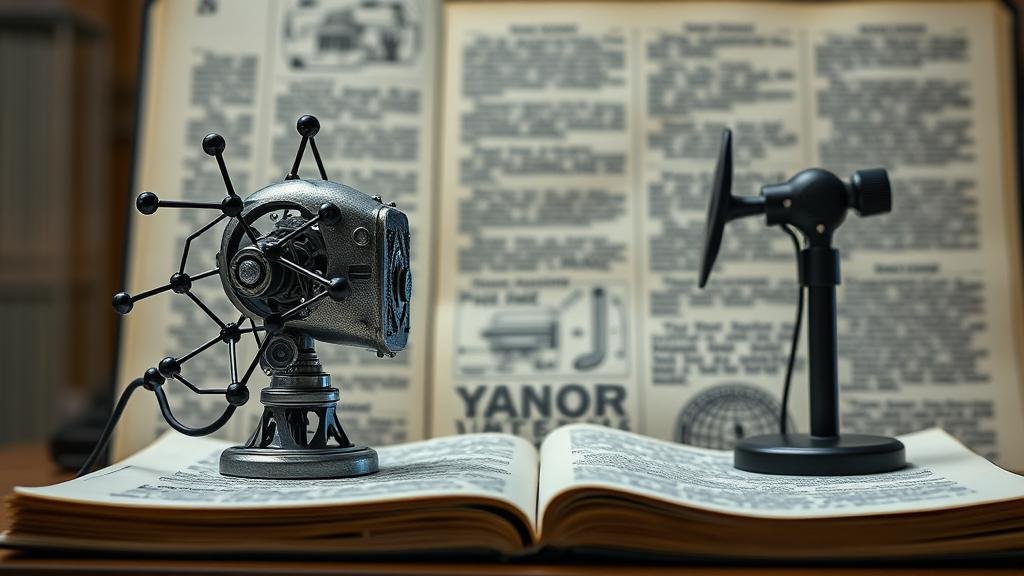Leveraging AI to Automate Translation of Old Scientific Journals for Artifact Research
Leveraging AI to Automate Translation of Old Scientific Journals for Artifact Research
The study of historical scientific journals provides invaluable insights into the evolution of scientific thought and technological advancements. But, many of these journals, particularly those written in languages other than English or in archaic scientific terminology, are underutilized in contemporary research. This article explores how artificial intelligence (AI) can be leveraged to automate the translation of these old scientific texts, thus facilitating artifact research and enhancing scholarly communication.
Background and Significance
Old scientific journals often contain data, observations, and theories that are foundational to modern scientific disciplines. In particular, journals published before the mid-20th century may hold unique information about early experimental methodologies, historical context, and cultural influences on scientific inquiry. For example, the works of pioneers such as Gregor Mendel in the 19th century, documented in journals like Verhandlungen des Naturhistorischen Vereines in Brünn, offer critical information on genetic inheritance that remains relevant today.
Despite their value, many of these journals remain inaccessible due to language barriers and outdated formats. A significant portion of scientific literature is published in languages like German, French, and Russian, and the scientific jargon of past eras can be particularly challenging for modern researchers. According to a 2021 study published in Science Advances, an estimated 85% of relevant archival texts have not been translated into English, limiting their use in current research.
The Role of Artificial Intelligence in Translation
Artificial intelligence has progressed rapidly in natural language processing (NLP), making it possible to automate the translation of texts with increasing accuracy. Recent advancements in machine learning, particularly through algorithms like Google Translate and various domain-specific translation models, have demonstrated a remarkable ability to understand and translate complex scientific language. For example, deep learning models trained on parallel corpora of scientific literature can grasp not only linguistic structures but also technical terms specific to various fields, such as biology or physics.
- Case Study: Google Translate – In 2019, Google improved its translation capabilities for scientific texts by utilizing neural machine translation (NMT), which more effectively captures context, leading to better translations of complicated scientific phrases.
- Case Study: SciBERT – This specialized BERT (Bidirectional Encoder Representations from Transformers) model developed at the Allen Institute for AI was trained on scientific literature and has shown significant promise in translating technical documents while maintaining scientific nuances.
Challenges in Automating Translation
While AI offers transformative potential in translating old scientific journals, several challenges must be addressed. Among these are:
- Contextual Understanding – AI models often struggle with idiomatic expressions and context-specific meanings, which can lead to inaccuracies in translation.
- Linguistic Nuances – Scientific terminology can evolve over time, and terms that were standard in the past may differ significantly from contemporary usage.
- Text Structure – Many old journals include figures, footnotes, and references that require careful handling during translation to preserve their meaning.
Real-World Applications
The automation of translation in scholarly journals can greatly benefit various fields of research, such as:
- Archaeology – Researchers can access old journals documenting excavation findings and methodologies that are critical for understanding historical artifacts.
- History of Science – Historians could better analyze the development of scientific ideas over time by accessing original texts in their original languages.
- Multidisciplinary Research – Helpd access to a wider range of literature can enable collaborative research across disciplines, fostering new innovations and discoveries.
For example, the translation of Annales de Chimie et de Physique, which published essential chemical research in French during the early 19th century, can provide insights into the foundational experiments that led to the development of modern chemistry.
Conclusion and Future Directions
Automating the translation of old scientific journals through the application of AI holds the potential to revolutionize artifact research and enhance scholarly communication. By improving access to historical scientific literature, AI can bridge gaps in knowledge and facilitate interdisciplinary collaboration. The future lies in refining these algorithms further and establishing cooperative frameworks that include linguists and historians to ensure accurate translations that respect the scientific integrity of original texts.
As research continues into developing more sophisticated AI translation systems, the scholarly community must also engage in discussions about the ethical implications of AI in research, particularly concerning authorship rights and the integrity of the original texts being translated.



